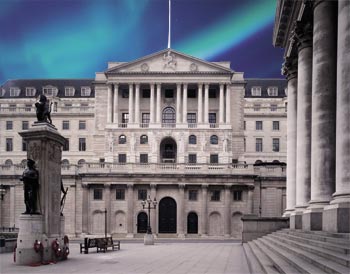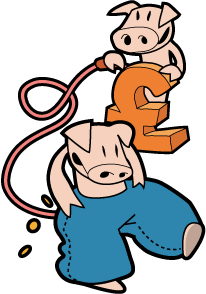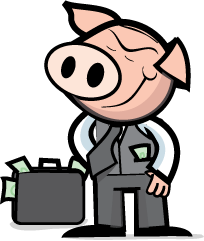 What’s money worth?
Or, to put it another way how much can your money buy? Or, to put it yet another way, why do things cost what they do?
The price of something partly depends on what it costs to make, how popular it is and the amount people have to spend to buy it – that’s called DEMAND. And how much is available – that’s called SUPPLY.
When Toy Story’s Buzz Lightyear first came out, so many kids wanted one that the manufacturers couldn’t supply the demand quickly enough. As a consequence, the price of the toy was quite high because parents were willing to pay more just to get hold of one!
 As time went on, the manufacturers were able to increase the supply. Consequently, more people could buy them. As the supply of the toys caught up with demand, the stores needed to bring the price down so they would be sure of selling them. As time went on, the manufacturers were able to increase the supply. Consequently, more people could buy them. As the supply of the toys caught up with demand, the stores needed to bring the price down so they would be sure of selling them.
We measure the value of things by giving them a price. Generally, demand and supply influence the prices we pay. If demand is high, prices tend to go up. If supply is high, prices tend to go down.
Here are a few examples: Parents often complain about how airline tickets cost more just before the holidays start. That’s because the airlines know that more people will want to travel during the holidays than, say, during term time. In this case, the demand is high compared with the supply.
Even weather has its effect on prices. When it’s good, and farmers experience bumper crops and harvests, the prices of vegetables and fruit will be lower than when the weather has been awful and the harvests have been bad.
Prices are also affected by accidents, disease or disasters. When we had ‘mad cow’ disease a few years back, English beef prices went down. People felt that free range beef, or beef which came from other countries, was safer than ‘ordinary’, English beef. The demand for ‘ordinary’ English beef fell, and so did its price.
 We can see the pattern of supply and demand influencing prices in all sorts of ways. When a pop group starts their career, their fee for singing at a gig will be relatively low. They are not ‘in demand’. We can see the pattern of supply and demand influencing prices in all sorts of ways. When a pop group starts their career, their fee for singing at a gig will be relatively low. They are not ‘in demand’.
However, if that same group has a mega hit, their fee for performing will increase dramatically. Why? Because the demand for them is high but the ‘supply’ or their availability is restricted. There’s only one of them!
Take water: at home, we just turn on a tap, and there it is. But, when we’re on holiday, sitting on a hot beach, we’d willingly give £1 for a drink of cool, refreshing water. The demand is great, but the supply is limited. We don’t even have to be on holiday. Next time you visit a motorway service station shop, compare the price of bottled water against the price at the supermarket.
So what is money worth, then? Simply, its worth is what it can buy us. If we have a £5 note in our pocket, and the price of something we want has gone up, we have to choose whether to buy less of it, buy something else we can afford, or save the £5 and add to it from the next week’s pocket money.
 Prices go up and down all the time. This is normal and means we may have to change the way we spend our money. Prices go up and down all the time. This is normal and means we may have to change the way we spend our money.
However, if the price of everything – food, drinks, sweets, games, books – were to go up at the same time, and keep rising, our same £5 note would buy less and less. This is called inflation – which is not good for the country. Inflation is something the Bank of England works hard to control.
The control of changes in prices - keeping prices stable - is one of the Bank’s most important jobs. And remember, we can also rely on its ‘Promise to Pay’.
www.bankofengland.co.uk/education
 back back
|






 As time went on, the manufacturers were able to increase the supply. Consequently, more people could buy them. As the supply of the toys caught up with demand, the stores needed to bring the price down so they would be sure of selling them.
As time went on, the manufacturers were able to increase the supply. Consequently, more people could buy them. As the supply of the toys caught up with demand, the stores needed to bring the price down so they would be sure of selling them. We can see the pattern of supply and demand influencing prices in all sorts of ways. When a pop group starts their career, their fee for singing at a gig will be relatively low. They are not ‘in demand’.
We can see the pattern of supply and demand influencing prices in all sorts of ways. When a pop group starts their career, their fee for singing at a gig will be relatively low. They are not ‘in demand’. Prices go up and down all the time. This is normal and means we may have to change the way we spend our money.
Prices go up and down all the time. This is normal and means we may have to change the way we spend our money.






